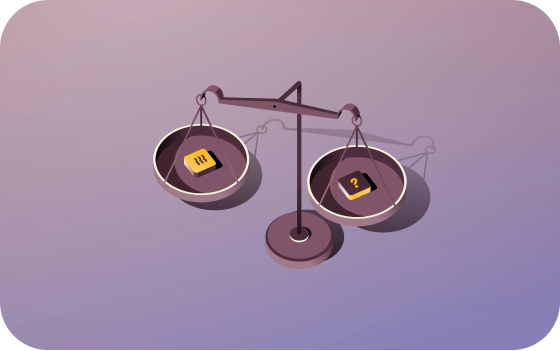
Hire and pay employees in the Netherlands

Hiring for the first time in the Netherlands? We know it can be a complex and time-consuming process. The Netherlands is subject to both local laws and European Union regulations, so there’s a lot to master. In this guide, we’ll cover the essentials of hiring in the Netherlands, with information on Dutch work permits, classifying Dutch employees, new hire onboarding, and so on.
Employer of Record (EOR) vs. entity
One of the first things you’ll need to do is decide between setting up your own entity or hiring employees through an EOR.
- Dutch legal entity. Setting up a local entity from scratch means registering with local authorities, opening a Dutch bank account, and seeking advice from experts to ensure compliance with tax and labor laws. There are a few things you’ll need to do off the bat: pick the right business structure for your company, select an available name, and set up an address. Then, you'll have to register your company with the Netherlands Chamber of Commerce (KVK) and the Dutch Tax Authorities and Customs Administration.
- Dutch EOR. An EOR is a third-party service that operates as an employer on a company’s behalf. In addition to letting you legally hire full-time Dutch employees, EORs handle all the legal requirements to ensure compliance with Dutch laws for payroll, employment contracts, and benefits. EORs can also be used to calculate and withhold income taxes, onboard and manage employees, and run payroll.
Your decision will likely be dependent on your company’s size, resources, and growth plans. Here are the pros and cons of using an EOR vs. setting up a legal entity:
Cost and implementation
The setup is less time-intensive.
Hire in days instead of months.
This option is costlier as you scale.
Can take up to six months to set up—and you have to pay registration fees.
Once you've hired enough employees, this option is more cost-effective.
Hiring
Set up new hires fast—often within one to 14 days—depending on the provider of the EOR service.
Supports mass expansion into new markets.
Compliance
Provides localized employment contracts, manages compliance work, and assumes liability.
Can’t customize certain policies, or HR and legal processes to your specific company needs.
Need to have expert command of local employment laws and regulations, as well as internal legal resources, since your company assumes all legal liability.
Can tailor any policy, or HR and legal process to your specific company needs.
Payroll and benefits
Pay and insure your employees fast—regardless of location.
Your taxes are handled for you.
Need to manually keep track of statutory requirements and employee entitlements for every worker.
With an EOR in hand, you can begin the hiring process by collecting your employee’s information (such as their name, initials, date of birth, complete address) and Citizen Service Number (BSN).
Learn how Rippling can help you hire and onboard Dutch employees in 90 seconds—and understand the steps to hiring through an EOR— in our guide.
Classifying Dutch workers: employees vs. contractors
In the Netherlands, it’s crucial to correctly classify your workers before moving on with the onboarding process. Independent contractors and full-time employees enjoy different protections and entitlements—and employers can be subject to penalties or harsh fines for misclassification. Our in-depth guide covers what you need to know about classifying Dutch employees and maintaining compliance with employment laws.
Here’s a brief overview of the ways Dutch law differentiates between employees and independent contractors:
Contractors
Employees
High level of worker control. Contractors are generally given more autonomy to determine how to complete the work and when to do it.
More direction from the employer. Employees generally receive more guidance and direction from their employers.
Equipment and tools are owned by the worker.
Equipment and tools are typically provided by the company.
More independent. Contractors tend to be less integrated into the company, often working remotely.
Highly integrated. Employees are usually more integrated into the company and are more likely to work on-site.
No benefits entitlement. Contractors are entitled to a very short list of benefits including a fair minimum wage, fair work hours, and reasonable working conditions. They’re also responsible for filing their own taxes.
Entitled to benefits. Depending on their role and company, employees are generally entitled to overtime pay, vacation pay, health insurance, and even retirement plans.
Limitation on single-employer income. Contractors are only able to make 70% of their income from a single employer.
Entire income is paid by a single employer. 100% of an employee’s annual wage is paid by the employer.
Time-constrained engagement. Usually, contractors are only hired for a specific period of time or project.
Indefinite working relationship. Employment relationships are rarely bound by time or project.
Risk of loss is higher. Contractors can also be more liable for the work they perform.
No risk of loss. As part of the employment relationship, employers assume liability for work-related problems—not employees.
Non-exclusive work. Contractors cannot be legally required to only provide services for one company. They can offer their services to multiple organizations.
Exclusive work. Employees can be legally limited to only provide services to one company.
Work permits for Dutch employees
Ensuring your prospective Dutch hire is allowed to work in the Netherlands can be the difference between a smooth onboarding process and steep legal consequences—so be sure not to skip this step. Generally, work permits are necessary for foreign nationals who aren’t citizens of the European Union (EU), the European Economic Area (EEA, which includes Iceland, Liechtenstein, and Norway), or Switzerland.
The Netherlands offers two main types of work permits:
- Work permit (TWV). A TWV work permit (or short-stay seasonal work permit) is used for individuals employed at your company for less than 90 days. You can apply for this work permit through the UWV—known as the Employee Insurance Agency in English. It’ll remain valid for one year with the possibility of renewal.
- Combined residence and work permit (GVVA). Also known as a single permit, the GVVA is meant for potential hires outside the EU, EEA, and Switzerland. This combined residence permit is for individuals who’ll be employed at your company for 90 days or more and need a way to reside in the Netherlands.
Check out our guide to work permits in the Netherlands for more details on permit applications and eligibility.
New hire onboarding checklist
There’s a lot to keep track of during a new employee’s onboarding process, from completing the proper paperwork to equipping them for their first day. This is your opportunity to leave a lasting impression and set them up for success. After all, a positive onboarding experience can improve employee productivity and retention.
We’ve broken down the process into stages with specific tasks for each one:
Before their first day
- Run a background screening.
- Send their employment contract (more on that in the next section).
- Complete the necessary paperwork.
- Enroll new hires in payroll.
- Set up hardware access.
- Create logins for necessary software and apps.
- Assign an onboarding buddy.
On Day 1
- Make sure their workspace is set up.
- Send a welcome email.
- Provide a new hire packet.
- Host a get-to-know-you event.
- Give them an office tour.
During their first 90 days
- Schedule training.
- Set goals for the quarter.
- Schedule bi-weekly check-ins with managers.
- Seek their feedback on the onboarding experience.
Looking for the full list of onboarding essentials? Read our guide to new hire onboarding in the Netherlands.
What to include in an offer letter in the Netherlands
Offer letters (also known as employment contracts) can set the stage for your employment relationship early on. Here’s some of the information and necessary documents to include in your offer letter:
- Employer and Employee name job title, job description/tasks, start date, end date and contract type (for example fixed term contract or indefinite contract)
- Trial/probationary period
- Working hours per week and rest/lunch periods
- Compensation and benefits (salary, pension contributions, holiday leave, 8% holiday allowance, and more)
- Confidentiality agreements
- Termination policy
- Flexible working possibilities
- Non-compete and non-solicit clauses
See our guide to creating legally compliant job offer letters in the Netherlands.
NDAs and confidentiality agreements in the Netherlands
A non-disclosure agreement (NDA) should be included as part of your offer letter. In the Netherlands, an NDA legally binds one or more parties from revealing proprietary or confidential information to third parties. The Netherlands highly encourages the use of NDAs to protect sensitive company information—as long as they’re not being used to wrongfully silence whistleblowers.
A Dutch NDA can protect the following types of information:
- Trade secrets
- Proprietary information
- Financial information
- Sensitive employee information
- Intellectual property
- Customer data
Read more about NDAs and their enforceability in our primer on NDAs in the Netherlands.
Running background checks on Dutch employees
Background screenings can be a nerve-wracking part of the hiring process. You’re likely excited about your new candidate, and hopeful their employment and criminal histories check out.
While running background checks isn’t legally required in the Netherlands, but be sure not to skip this step. Most Dutch employers conduct background screenings on new hires—but only after receiving signed consent from the candidate. In this case, the candidate will request a “certificate of good behavior or certificate of conduct” (VOG), which is a document showing that any previous conduct is not an obstacle to the employee carrying out the new role. The employee can apply for a VOG either online or through the municipality. Because the Netherlands adheres to EU policies, the screening process is closely monitored by the GDPR, to ensure personal data protection.
Here are some commonly run background checks in the Netherlands:
- Certificate of good conduct (VOG)
- Credit report
- Employment history
- Reference check
- Security screening
- Education verification
- Social media profiles
- Blacklist registry
Note: there are background checks that are illegal in the Netherlands. See our guide for more details on those, and common mistakes to avoid during the screening process.
Paying employees in the Netherlands
So, you’ve chosen an EOR that can help you hire employees in the Netherlands—that means you’re one step closer to paying them! Then, you can take the following steps:
- Choose a global payroll solution.
- Make sure your employees are correctly classified.
- Collect your employees’ information including their name, initials, date of birth, and their Citizen Service Number (BSN) and if applicable, collect a completed and signed withholding and tax credit form.
- Set your employee’s salary in EUR—citizens in the Eurozone have to be paid in Euros.
- Run payroll.
Learn more about paying employees in the Netherlands in our step-by-step guide.
Mandatory employee benefits in the Netherlands
Dutch employees are afforded a generous amount of benefits and protections, many of which exceed the minimum requirements of other countries. While statutory benefits set the minimum for what an employer should provide, you can certainly offer more.
Here are the mandatory benefits in the Netherlands:
- Pensions. The Netherlands’ pension (or social security) system has three components: The Dutch State Pension System, a Workplace Pension, and a Private Pension. Employers and employees are both responsible for paying into the Workplace Pension. Generally, employees contribute 8% of their monthly paycheck to the pension scheme while employers contribute 16% to the fund each month.
- Vacation entitlements. Full-time Dutch employees are entitled to 20 statutory vacation days each year (based on full-time employment). Most Dutch employers, however, offer additional non-statutory vacation days on top of the 20 statutory days (for the total paid vacation to be anywhere between 24-32 days per year).
- Statutory holidays. In the Netherlands, employers are actually not legally obligated to give employees time off on public holidays, however, it is common practice to do so unless it is stated otherwise in the employment agreement or (if applicable) in a collective bargaining agreement.
- Holiday allowance. Employees in the Netherlands have a legal right to holiday allowance on top of their base salary. This amount must be at least 8% of their annual gross base salary. The holiday allowance is accrued monthly and can be paid monthly or yearly (usually in May.)
- Sick leave. Dutch employees aren’t limited to a specific number of sick days. They are also entitled to 70% of their wages during their sick leave—paid to them by the employer for a period up to 2 years.
- Healthcare insurance. Employers are required to contribute to the Health Insurance Act. But, managing healthcare and paying for the policy is the responsibility of the employee.
- Long-term care. Dutch employees are protected under the Long-Term Care Act (WLZ). Employers are responsible for making sure their employees are covered under this benefit. Contributions from the employees’ paychecks are automatically deducted into this fund every month.
Read our complete guide to offering benefits in the Netherlands for more details on mandatory and supplementary benefits.
Managing remote employees’ computers and apps
Supplying and maintaining employees’ devices from afar can be quite a challenge. When you’re onboarding globally, there are so many factors to keep track of, including shipping computers, setting up and securing employee accounts, and managing apps through the employee lifecycle.
It’s your responsibility to ensure your employees are ready to go on their first day with all the apps and tools your team uses. With Rippling, you can:
- Set up and secure employees’ accounts quickly.
- Ensure employees have access and permissions to all the tools they need.
- Have a single place to set up, manage, and disable employee apps (like Google Workspace).
Check out our guide to learn more about setting up and managing remote employee devices.
Protecting company IP in the Netherlands
Protecting your company’s original ideas should be top of mind when hiring in a new country. As you share sensitive information with new employees, you’re potentially putting your company at risk. Fortunately, the Netherlands has nine types of protections for intellectual property (IP) rights. Some are granted automatically, and others you must register for.
Here are the IP rights that require registration:
- Patents: used to protect an invention or technical process.
- Trademark rights: used to protect brand, logo, product, or design.
- Design rights: used to protect brand-new 2D and 3D products.
- Plant breeders’ rights: used to protect newly found plant varieties.
For more details on IP rights in the Netherlands—and the types granted automatically—read our beginner’s guide.
Complying with Dutch labor laws
Throughout the hiring process, you want to make sure you’re maintaining compliance with Dutch labor laws at every step. This includes everything from employee benefits to personal data protection and termination regulations (more on that later).
Here are some of the most important laws and regulations to watch out for when hiring in the Netherlands:
- You’ll be fined for filing your taxes late. Employers must pay the correct amount of payroll taxes before the end of the following month. Otherwise, you’ll be charged a 3% administrative fee on the outstanding balance. This fee can add up quickly, as it applies to all of your employees in the Netherlands.
- Probationary periods. While a probation period is encouraged for new hires, it can only be given for employment agreements longer than 6 months. Contracts with duration of 6 months or less do not have a probationary period. The duration of the probationary period depends on the duration of the employment contract. The probationary period is much shorter than in other countries and is as follows:
1 month (max) probationary period
- temporary employment contracts of more than 6 months, but less than 2 years.
- temporary employment contracts without end date.
2 months (max) probationary period
- Permanent employment contracts.
- Temporary employment contracts of more than 2 years.
Read more about Dutch labor and employment laws in our comprehensive guide.
Terminating employees in the Netherlands
If you’re just hiring your first Dutch employee, terminations are likely not top of mind. Still, it’s important to understand the basics of dismissal policies in the Netherlands, so you don’t find yourself subject to a wrongful dismissal claim down the line.
Employees in the Netherlands enjoy strong protections and terminations need to be justified (either by economic reasons or non-economic causes). An employment relationship can be terminated the following ways: Voluntary terminations and involuntary terminations.
Voluntary terminations include:
- Employee terminates the employment with immediate effect during the probationary period or resigns giving notice (usually 1 month) agreed on in employment contract
Involuntary terminations:
An employer can terminate an employment contract by:
- Terminating the employment contract with immediate effect during the probationary period
- Not renewing an employment contract once its natural termination date has come to an end.
- Terminate an employment relationship with “dismissal by mutual consent” (most common approach). During this approach the employee cooperates with their dismissal by agreeing to it via a mutual termination agreement in order to prevent a dismissal procedure via the UWV or sub-district court as these procedures can be lengthy (more of this below). Employee cooperation does not affect the employee’s entitlement to unemployment benefits. This type of termination is most common because it does not require dismissal approvals from the Dutch authorities (see below).
- Apply for a dismissal permit with the Dutch Employment Insurance Agency (UWV). This can be used in cases where the employee doesn’t agree with the decision (especially if they’re suffering from a long illness), or they’re being let go due to bankruptcy.
- Apply for a dismissal permit with the cantonal court. If you’re dismissing an employee for a reason other than bankruptcy or long-term illness, you need a permit from a Dutch sub-district court (cantonal court).
- Summary/instant dismissal. If there’s an urgent need to terminate an employee, you can dismiss them immediately, without notice. However, you’ll still need to be ready to prove the dismissal was justified—especially if the case ends up in court.
Transition payment/allowance
Most involuntary terminations in the Netherlands require a transition payment to the employee. The transition payment is an amount of money paid to the employee when their contract is involuntarily terminated or not renewed.
Notice periods for terminations vary by length of service. Check out our guide to dismissals in the Netherlands for more details.
Disclaimer: Rippling and its affiliates do not provide tax, legal, or accounting advice. This material has been prepared for informational purposes only, and is not intended to provide, and should not be relied on for, tax, legal, or accounting advice. You should consult your own tax, legal, and accounting advisors before engaging in any related activities or transactions.
GLOBAL HIRING
Hire, manage, and pay employees in the Netherlands with Rippling
Onboard Dutch employees and contractors in 90 seconds
Set up new hires in the Netherlands with everything they need, from country-specific trainings to 3rd-party apps like Slack.
Pay your Dutch team in EUR—in minutes
Pay all of your employees and contractors around the world without waiting on transfers or conversion.
Manage HR, IT, and Finance in one system
Juggling multiple systems for your team? That creates silos and busy work. Rippling does it all—in a single system.
Automate your HR compliance work
Understanding and complying with Dutch laws is hard work. Rippling does it for you.














































































